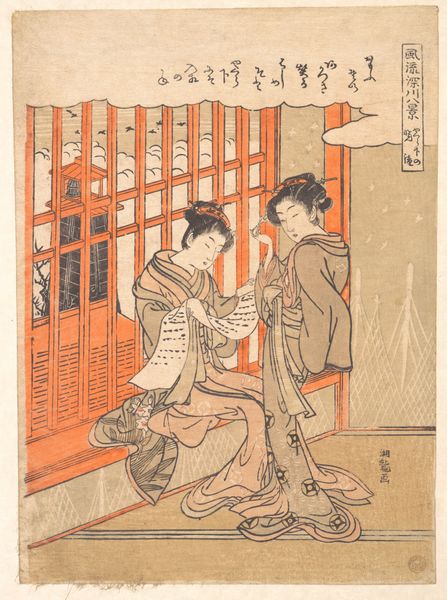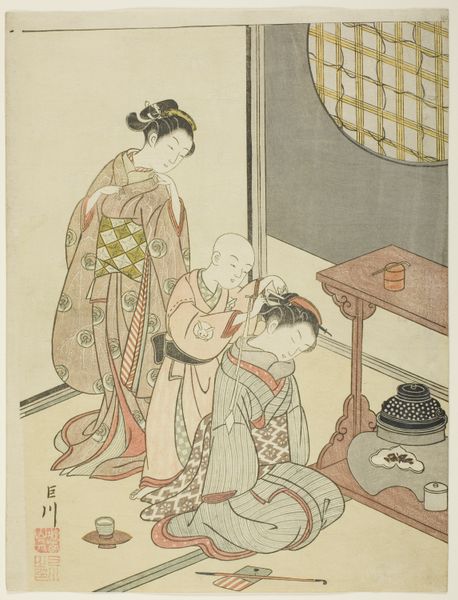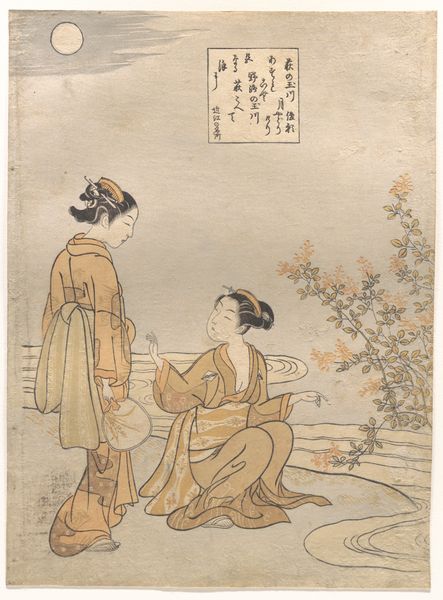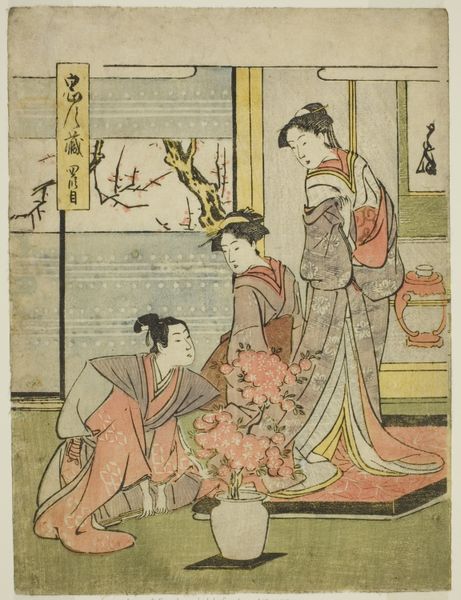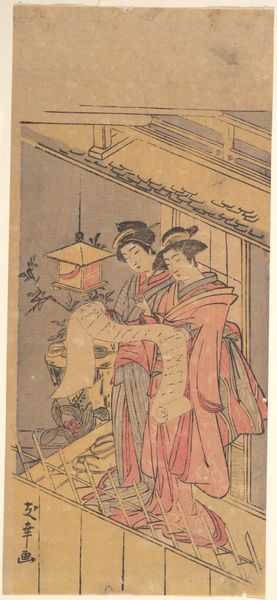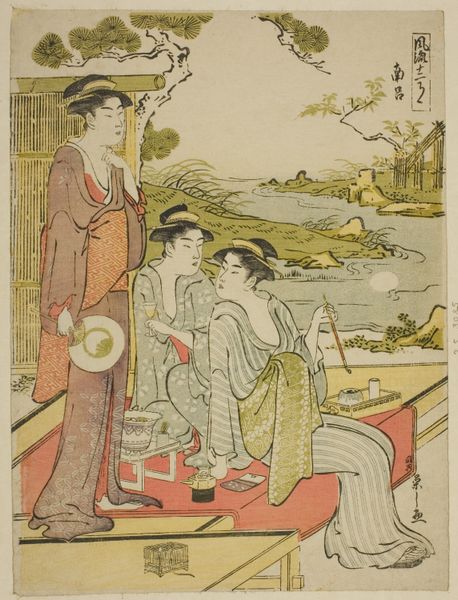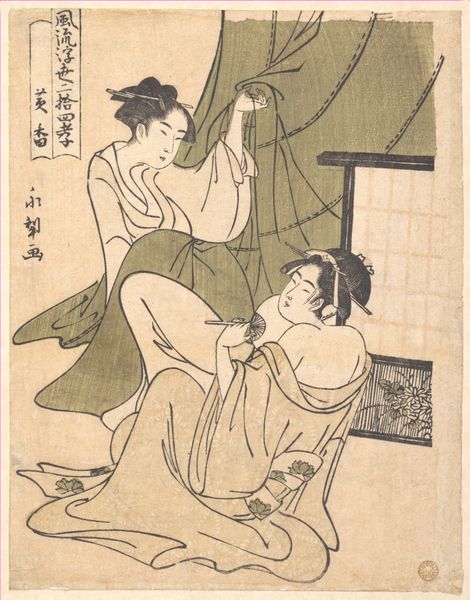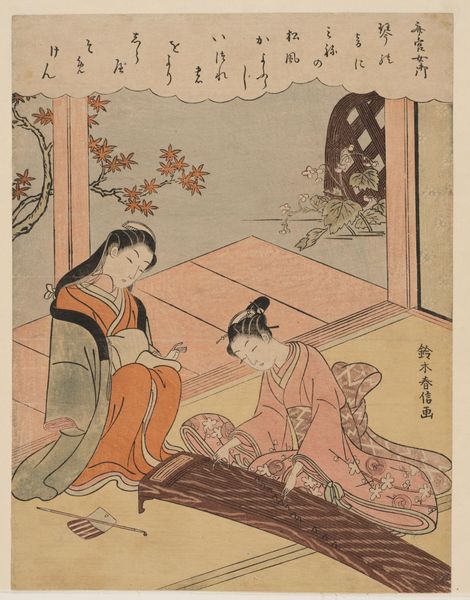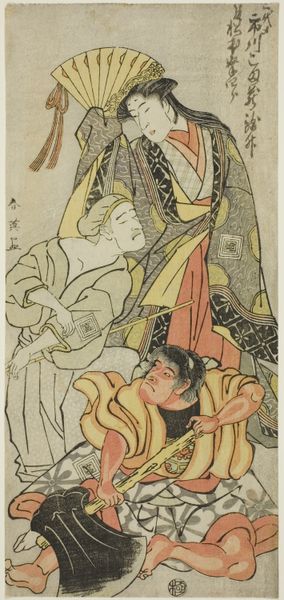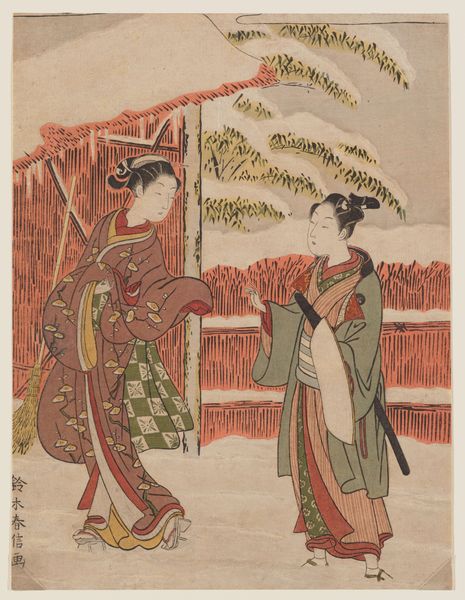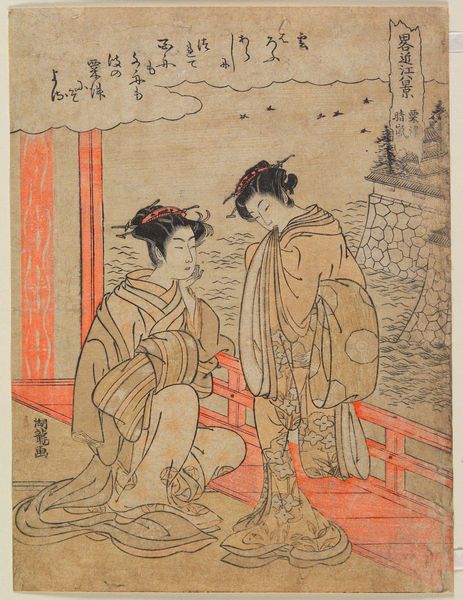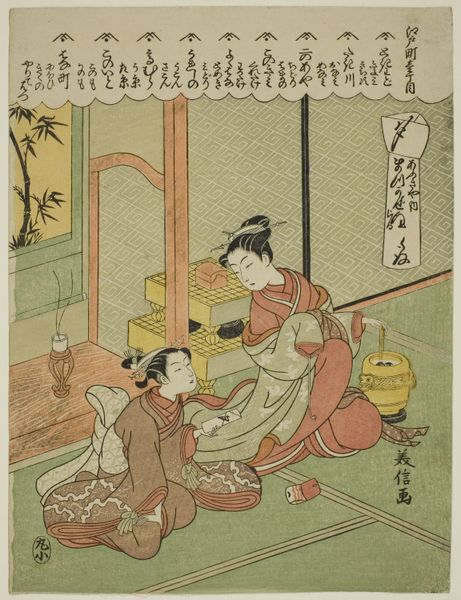
print, woodblock-print
# print
#
asian-art
#
ukiyo-e
#
woodblock-print
Dimensions: H. 10 5/16 in. (26.2 cm); W. 7 3/4 in. (19.7 cm)
Copyright: Public Domain
Curator: Here we have Isoda Koryūsai's "Sotoba; One of Seven Komachi," a woodblock print dating from 1770 to 1790. Editor: What strikes me first is the almost dreamlike quality of the smoke, how it writhes and dances between the figures. It feels like the air itself is alive with unspoken sentiments. Curator: Indeed. Let's consider the materials and process. This is a Ukiyo-e print, meaning it was produced using multiple woodblocks, each carved with meticulous detail and then inked to create the final image. This was very labor intensive, yet affordable art accessible to the merchant class. Editor: And the figures! Note how Komachi, a famed poet of Heian era Japan, is a popular theme with 7 known interpretations of her life! I find their postures and subtle expressions particularly interesting. Both figures have pipes, emphasizing this image deals with socializing through ritualized use of personal tools. Their long sleeves imply leisure, hinting towards this cultural theme with all its potential social implications! Curator: Precisely. Koryūsai was a master of capturing the fleeting fashions and lifestyles of Edo period Japan. The kimonos, the hair ornaments—these are not simply aesthetic details; they are indicators of social status and cultural identity. Notice the quality of the print, which shows how even in something "everyday" the makers were conscious about communicating social status. Editor: I also wonder about the context of the scene itself. The tree laden with blossoms evokes a sense of transient beauty, a common motif in Japanese art that mirrors the ephemerality of life itself. But note how this transient natural imagery contrasts with the rigid structures upon which she sits - implying tension and possibly an exploration of natural life conflicting with material reality. Curator: Perhaps the artist wishes to draw attention to the material needs met for transient appreciation and ritualistic enjoyment of pleasure. That even the ephemeral necessitates labor and consumption. Editor: I see that interpretation! It is truly remarkable how a single image can contain such a wealth of symbolism. Koryūsai captures a transient, cultural snapshot of social practice with his understanding of tradition! Curator: A point well made; the genius in examining Ukiyo-e art involves seeing the deep intersection between materials, social conditions, ritual, and culture, bringing insight into their interconnected roles of material making and meaningful visual display.
Comments
No comments
Be the first to comment and join the conversation on the ultimate creative platform.
